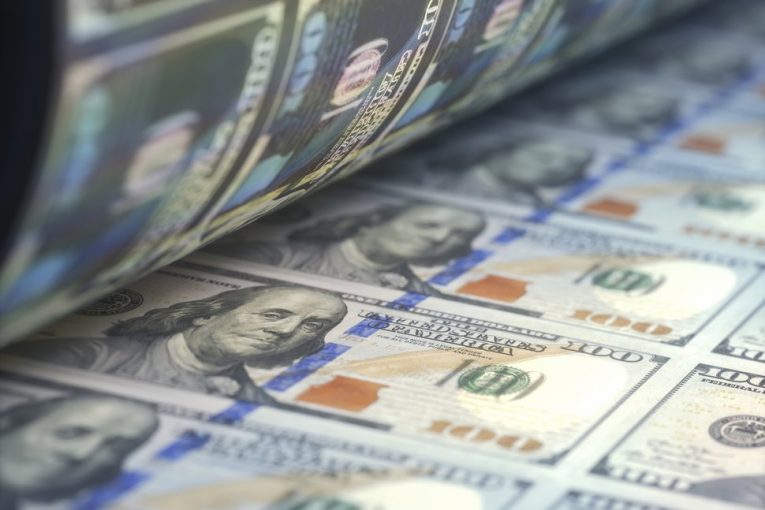

(c) By Mark Dempsey
Special to the Vanguard
Modern Money Theory provides an accurate description of federal fiscal policy, and frankly one that’s not that exotic–but it appears to be news to environmentalists.
Most of us were raised to believe federal fiscal policy is tax and spend. Just as your household requires earning its spending money, government needs to tax the population to get the wherewithal to make its purchases.
Both political right and left agree that tax and spend describes federal budgeting too. Margaret Thatcher famously said “If the state wishes to spend more, it can do so only by borrowing your savings or by taxing you more.
There is no such thing as public money, there is only taxpayers’ money.” Barack Obama went so far as to sponsor a commission (Simpson-Bowles) to close the gap between revenue and spending, comparing the government to a household with a big credit card bill.
But tax and spend cannot be true. For one thing, where would taxpayers get the dollars they use to pay taxes if the monopoly provider of currency (government) did not spend dollars out into the economy first?
The fiscal policy of money creators like the federal government must be completely different from households’. Spend first, then retrieve some dollars in taxes is the way things must  work . That’s just the operational nature of reality.
work . That’s just the operational nature of reality.
This observation means several things: first and foremost, money creators like the U.S. are fiscally unconstrained. Government doesn’t have to wait for tax revenue to provision federal programs. It can’t!
This insight is not that “Modern,” either–see New York Federal Reserve governor Beardsly Ruml’s paper “Taxes for Revenue are Obsolete“…from 1946.
Then why have taxes? Answer: to make the money do something valuable…like retiring the inevitable liability of taxes. Without the power to tax, the money becomes valueless–see the Confederate States of America for one example.
And what do we call the dollars left out in the economy, not retrieved in taxes? Answer #1: the dollar financial assets of the population–i.e. their savings. Answer #2: National ‘debt.’ Both answers describe exactly the the same thing, just as your bank account is your asset, but the bank’s liability.
Marching down to the bank to demand it reduce its debt (i.e. the size of your account) is not very sensible, yet it’s a commonplace when it comes to National ‘debt.’ (See this for the history of its effects.)
What has this got to do with the environment? I just got a fundraising appeal from the Sierra Club asking for lobbying money to eliminate carbon-producing coal from the world’s energy mix. It also mentioned we also need to take care of the coal miners and others displaced by this switch. It’s worth mentioning that no new tax would be needed to do this, but Sierra Club omitted that bit.
Government management of the big public works project we call “World War II” consumed 50 percent of the American economy. The proposed Green New Deal, which also would compensate those displaced by the switch to renewables, would only consume 5 percent of the current economy.
Besides lobbying to remove coal from our energy mix, my personal favorite would be a federal farm policy that paid farmers to sequester carbon rather than one paying them to not grow crops. We have the technology to measure how much carbon crops put in the soil, and adding carbon actually makes the soil more fertile.
As farm policy, it would be far more effective than letting them “launder money for Cargill and ADM”–two big agribusinesses–as Michael Pollan notes in The Omnivore’s Dilemma.
In any case, we can now see a possibility for programs to wean us off carbon-producing energy in a way that respects those displaced, and could move us toward planet-saving renewables and carbon sequestration.
All that is possible without any change to tax policy. The Biden administration is trying to raise corporate taxes to “pay for” its infrastructure proposals. That’s not necessary, and now you, and the Sierra Club, know it.
Mark Dempsey is a former technical writer, Realtor and vice-chairman of a Sacramento County Planning Advisory Council. He writes a blog at itssimplerthanitlooks.blogspot.com
Support our work – to become a sustaining at $5 – $10- $25 per month hit the link:
